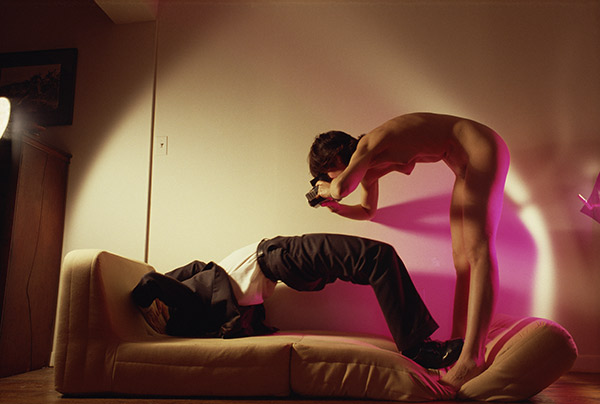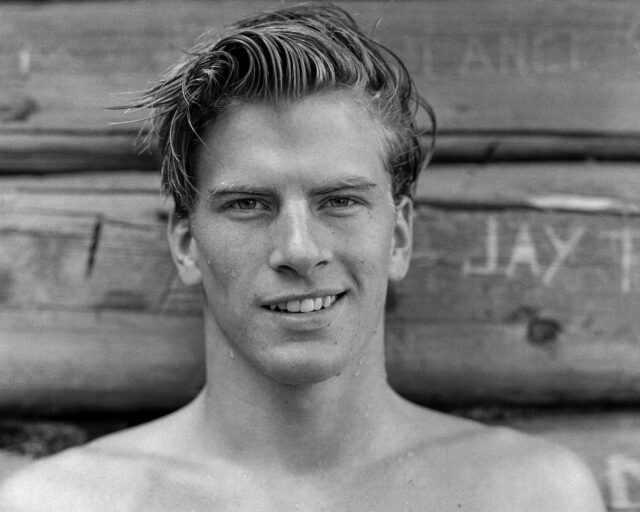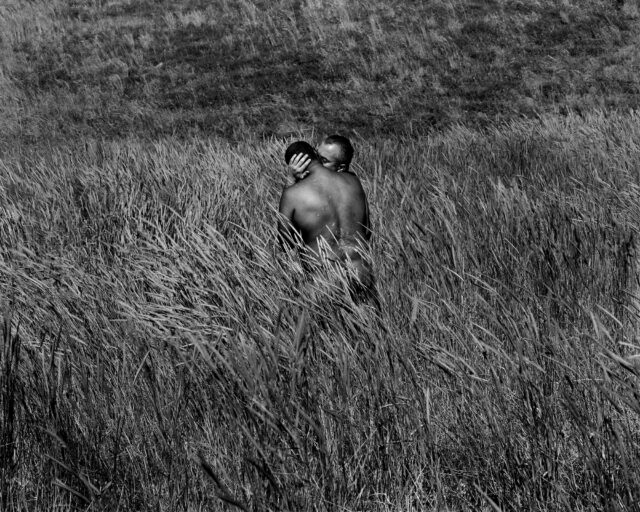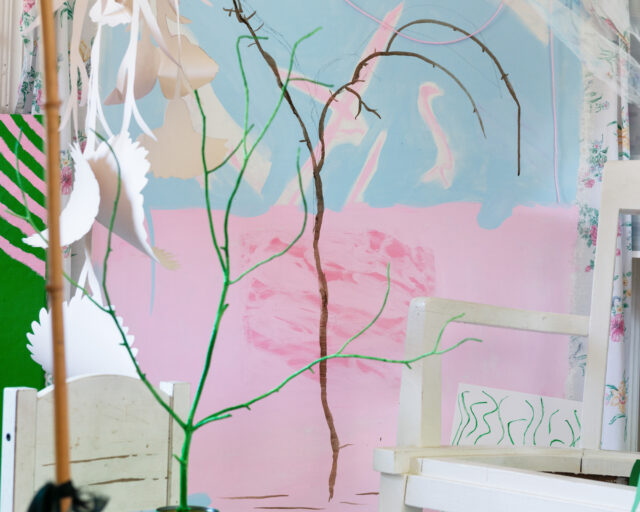Surreal Sexuality
Surreal Sexuality
In his staged, gel-lit nudes, Jimmy DeSana explored the body as object.

Jimmy DeSana, Storage Boxes, 1980
Courtesy the Estate of Jimmy DeSana and Salon 94, New York
Lit by raking color that recalls the strangest drag show you have ever seen, Instant Camera (1980) tells an incredible story. A nude woman holding a camera stands atop a nondescript couch, assuming the pose of an ersatz classical statue. Her curved body, muscles taut in an effort to maintain balance, is echoed by a circular nimbus of angelic light. This figure directs her camera toward a contorted entity, whose crumpled pose surely frustrates any attempt to take a picture. A picture of what? Since the second figure’s face is hidden, we can only guess. Lurking somewhere between the mundane and the extraordinary is Jimmy DeSana’s world—a surreal display of the desires coursing through the veins of everyday life.

Jimmy DeSana, Coat Hanger, 1980
Courtesy the Estate of Jimmy DeSana and Salon 94, New York
Born in 1949 in Atlanta, DeSana moved to New York in 1972 after studying art at the University of Georgia, and immediately became a fixture in multiple worlds that he mediated and processed with ever-present camera. He was a beloved member of New York’s East Village scene, what some have called the last avant-garde. Friends remember him as sensitive and kind. Perhaps most important for a photographer, he never took someone’s picture without permission. DeSana did much of his own printing, and cultural figures as diverse as Kathy Acker, Kenneth Anger, Richard Hell, David Byrne, Laurie Anderson, John Giorno, Debbie Harry, John Lurie, and Patti Astor cherished his portraits both for their commercial appeal and their skilled and flamboyant punk sensibility. His commercial work for venues like East Village Eye, File, New York Rocker, SoHo News, and the Village Voice exhibited the same formal rigor and imagination as his art photography, which he showed at Stefanotti Gallery and Pat Hearn Gallery.

Jimmy DeSana, Contact Paper, 1980
Courtesy the Estate of Jimmy DeSana and Salon 94, New York
DeSana’s camera was as dear to him as his sexual life; the two were mutually constitutive, and his engagement with the BDSM subculture provided boundless inspiration to him, both as an artist and as a gay man. DeSana complemented his colorful commercial and portrait images with a set of black-and-white silver-gelatin prints depicting BDSM scenes. Published as a book titled Submission in 1979, the photographs are intentionally ambiguous. Refrigerator (1975) is exemplary; composed of intermingling angles and shadows, the photograph cracks open the doors of respectability and shame, and inside we find the body deliciously bound. In his introduction to Submission, William S. Burroughs mistakenly claimed that these were documentary images of sex acts in progress. In fact, each photograph, no matter how lifelike, was staged, with DeSana and his friends acting as models. DeSana is thus at the crossroads of multiple avenues of representation, neither documentary nor purely artistic, neither commercial nor high art.

Jimmy DeSana, Cowboy Boots, 1984
Courtesy the Estate of Jimmy DeSana and Salon 94, New York
DeSana was an incisively critical of the photographic medium, normative sexualities, and commodity culture as his Pictures Generation colleagues, but the narrative of conceptual photography has been conspicuously devoid of an appreciation of queerness as a critical tool. It would seem that, in art-historical discourse, gay men are only friends, lovers, curators, or artists with a single platform: AIDS. This engenders a ghettoized history that excludes queer artists from these formative years of photo-conceptualism. Revisiting DeSana allows us to repair these oversights and restructure the long-standing Pictures narrative.

Jimmy DeSana, Instant Camera, 1980
Courtesy the Estate of Jimmy DeSana and Salon 94, New York
As a gay man, a photographer, an artist of the AIDS era, a lover, a son, and a friend, DeSana is as beautifully complex as his work. After he died of AIDS in 1990, DeSana left his estate to his best friend and muse, the artist Laurie Simmons. Simmons told me, “I gave myself twenty years to sort out a lifetime’s worth of breathtaking material. I also felt certain that the work would look as fresh twenty years later as it did at the time of its making.” The resurgence of DeSana’s revolutionary career could not come at a more opportune moment; his oeuvre is exemplary of new outlets for reconstituting the Pictures Generation with queer modes of vision and critique.
This article first appeared in Aperture Issue 218, “Queer.”
Jimmy DeSana: Late Work is on view at Steven Kasher Gallery, New York, through February 18, 2017.


























